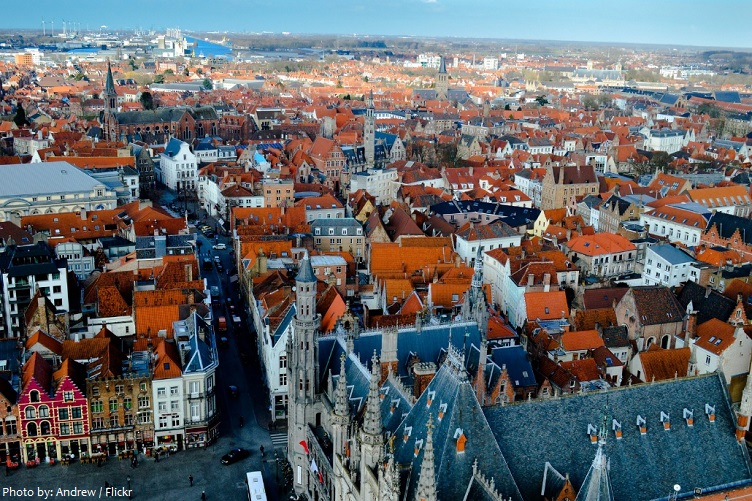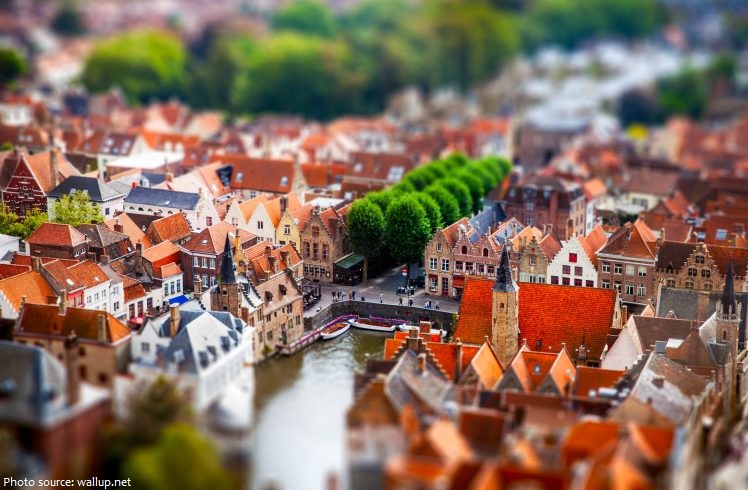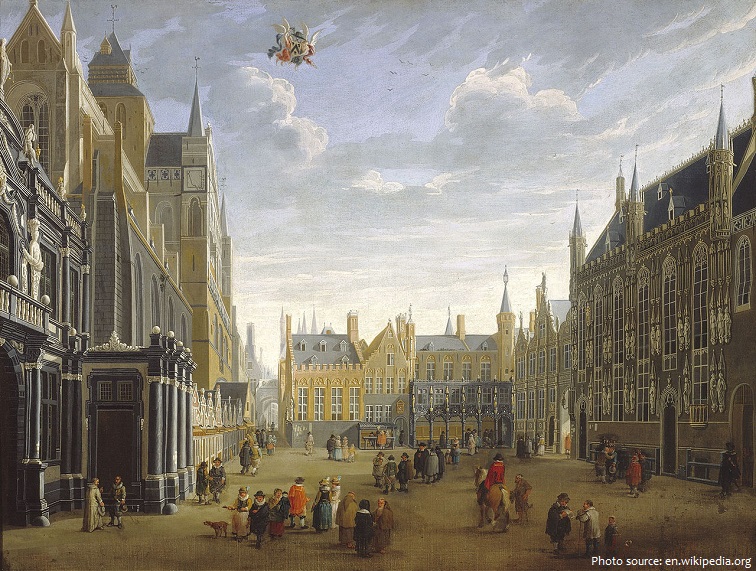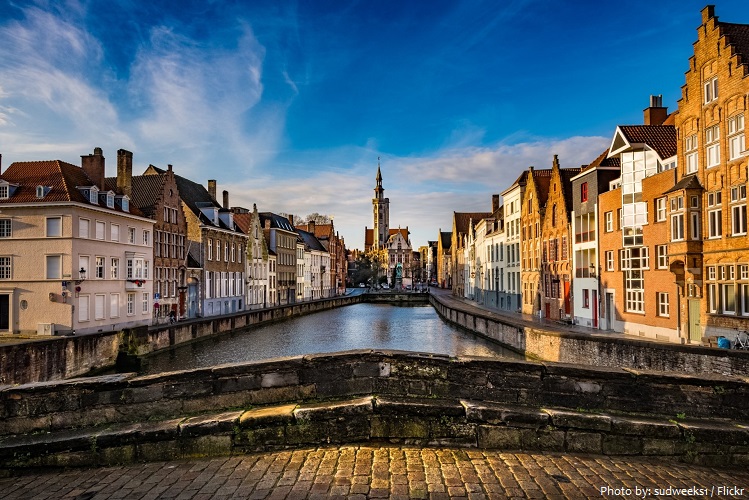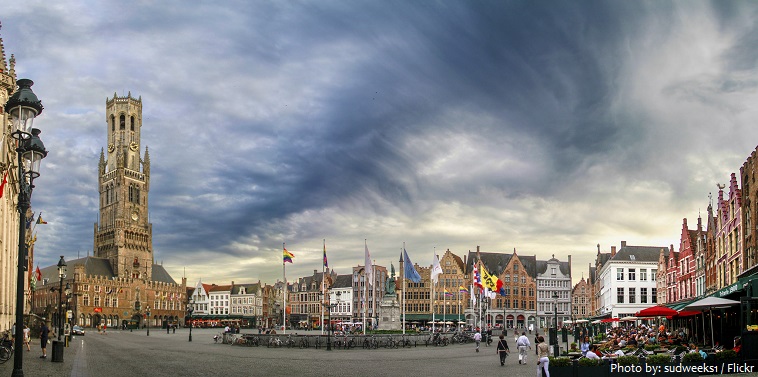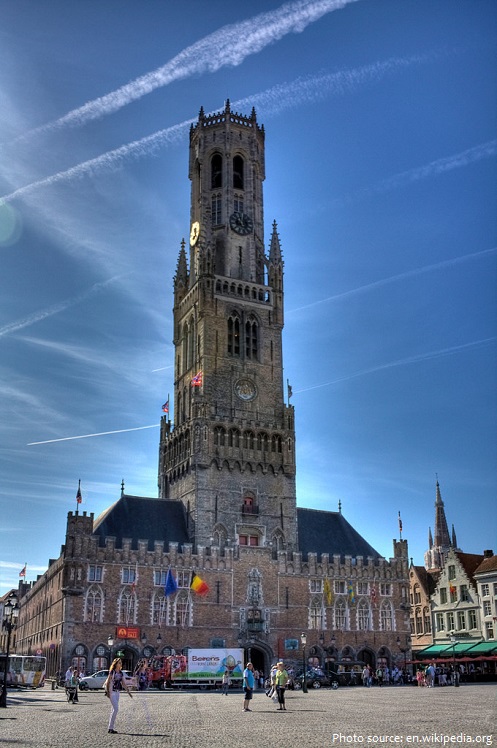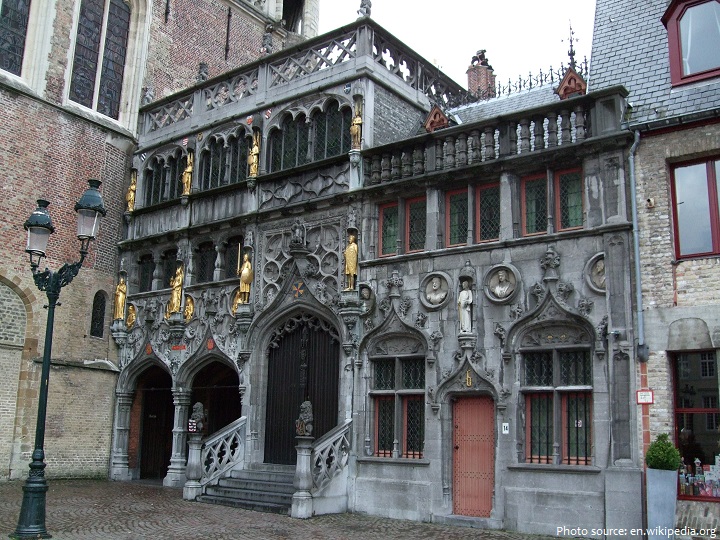Bruges is a city in the northwest of Belgium.
It is the capital and largest city of the province of West Flanders in the Flemish Region of Belgium.
As of January 2019, the population of Bruges is about 120,000 people of whom around 20,000 live in the city center.
Bruges covers a total area of 138 square kilometers (53 square miles).
The city has average elevation of 5 meters (17 feet) above sea level and the highest point is 45 meters (148 feet).
The name probably derives from the Old Dutch for “bridge”: brugga.
Originally a landing place on the Zwijn estuary, into which the Reie River flowed, it was mentioned in the 7th century as the Municipium Brugense (a name derived from a Roman bridge over the Reie).
In medieval times the sea flooded the area around present-day Bruges, carving out channels and waterways.
In the 12th century, Bruges gained city status.
As the Zwijn estuary silted up in the 15th century, the city began to decline as a trade center but remained brilliant and powerful as the court of the dukes of Burgundy and as the artistic center of the Flemish school of painting, until the religious and political struggles of the 16th century completed its eclipse.
In the last half of the 19th century, Bruges became one of the world’s first tourist destinations attracting wealthy British and French tourists.
In World War I German forces occupied Bruges but the city suffered virtually no damage and was liberated on 19 October 1918 by the allies.
From 1940 in World War II the city again was occupied by the Germans and again spared destruction. On 12 September 1944 it was liberated by Canadian troops.
Brugge is an outstanding example of a medieval historic settlement, which has maintained its historic fabric as this has evolved over the centuries, and where original Gothic constructions form part of the town’s identity.
This Belgium’s most perfectly preserved medieval town is jaw-dropping, and its beautiful architecture attracts more than two million visitors every year.
The historic city center is a prominent World Heritage Site of UNESCO. It is an outstanding example of architectural ensemble, illustrating significant stages in the commercial and cultural fields in medieval Europe.
The Markt of Bruges is located in the heart of the city and covers an area of about 1 hectare. Some historical highlights around the square include the 12th-century belfry and the West Flanders Provincial Court (originally the Waterhall, which in 1787 was demolished and replaced by a classicist building that from 1850 served as provincial court and after a fire in 1878 was rebuilt in a neo-Gothic style in 1887. In the center of the market stands the statue of Jan Breydel and Pieter de Coninck.
The south side of Bruges’ Markt is dominated by the Belfry of Bruges – Bruges’ most distinctive landmark – soaring above it. The Halle was begun in 1248 and twice enlarged, first in the 14th century and then again in the 16th century, and once functioned as the city’s main market place. The building encloses a picturesque courtyard, and the balcony above the entrance was once used by the city fathers to promulgate their statutes to the populace assembled beneath.
The Church of Our Lady in Bruges, dates mainly from the 13th, 14th and 15th centuries. Its tower, at 115.6 meters (379 ft) in height, remains the tallest structure in the city and the second tallest brickwork tower in the world (the tallest being the St. Martin’s Church in Landshut, Germany).
The Basilica of the Holy Blood is a Roman Catholic basilica in Bruges. The church houses a venerated relic of the Holy Blood allegedly collected by Joseph of Arimathea and brought from the Holy Land by Thierry of Alsace, Count of Flanders. Built between 1134 and 1157 as the chapel of the Count of Flanders, it was promoted to a minor basilica in 1923.
Choco-Story, the Chocolate Museum in Bruges, is located in the sixteenth-century “Huis de Crone” building on Sint-Jansplein (at the intersection of Wijnzakstraat and Sint-Jansstraat) in central Bruges. This building was originally the home of a wine tavern. Museum visitors can watch chocolate being made. Аdditionally, a section of the museum is dedicated to the health benefits of chocolate.
Bruges has a significant economic importance, thanks to its port, and was once one of the world’s chief commercial cities.
As one of the commercial and cultural capitals of Europe, Brugge developed cultural links to different parts of the world.
Bruges is well known as the seat of the College of Europe, a university institute for European studies. It was founded in 1949 by leading historical European figures and founding fathers of the European Union, including Salvador de Madariaga, Winston Churchill, Paul-Henri Spaak and Alcide De Gasperi in the wake of the Hague Congress of 1948.
Along with a few other canal-based northern cities, such as Amsterdam, it is sometimes referred to as the Venice of the North.
There are more than 80 bridges in Bruges.
The movie In Bruges with Colin Farrell, Brendan Gleeson and Ralph Fiennes was made there in 2008.
